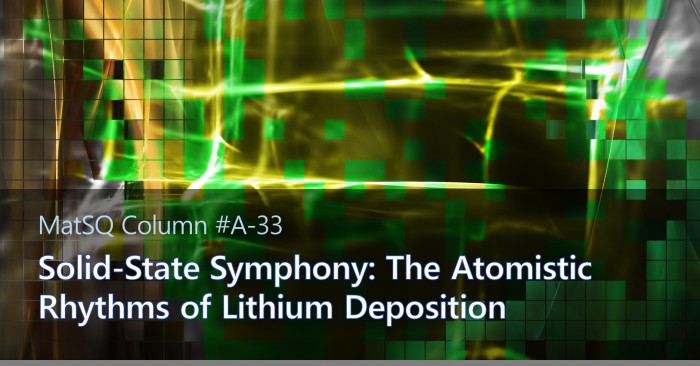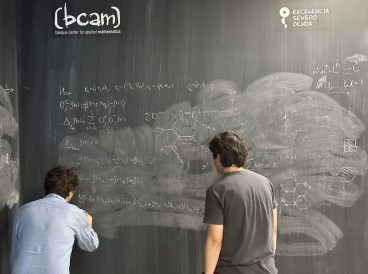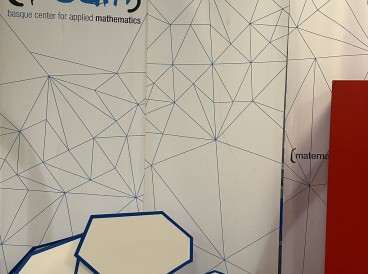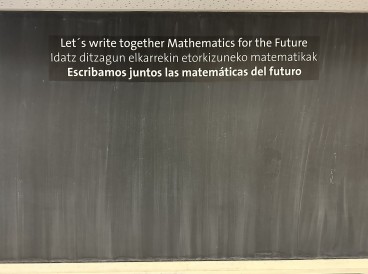
Introduction:
Crystallization is an important phenomenon in materials science, physics, and chemistry [1,2]. While crystallization induced by the change of temperature or solution is commonly studied, the crystallization under electrochemical deposition remains less explored, despite being a key process in the operation of metal electrodes, such as Li, Na, Mg, and Zn metal anodes for next-generation high-energy rechargeable batteries [3,4]. During electrochemical deposition, metal ions in the electrolyte are deposited and crystallized into metal particles. The energy barrier of the crystallization is a key contributor to the over-potential of electrochemical deposition, which should be minimized to improve the electrochemical performance of the metal anode. High overpotential or polarization leads to low power density, reduced materials utilization, low energy efficiency, and even battery failure, such as dendrite growth and short-circuiting during the plating of metal electrodes [5,6]. Further improvement of these metal anodes, such as Li metal anode, requires an understanding of crystallization processes during electrochemical metal deposition, especially at the atomistic level.
Uniqueness:
Here, using large-scale molecular dynamics simulations, we study and reveal the atomistic pathways and energy barriers of lithium crystallization at the solid interfaces. In contrast to the conventional understanding, lithium crystallization takes multi-step pathways mediated by interfacial lithium atoms with disordered and random-closed-packed configurations as intermediate steps, which give rise to the energy barrier of crystallization. This understanding of multi-step crystallization pathways extends the applicability of Ostwald’s step rule to interfacial atom states and enables a rational strategy for lower-barrier crystallization by promoting favorable interfacial atom states as intermediate steps through interfacial engineering. Our findings open rationally guided avenues of inter-facial engineering for facilitating the crystallization in metal electrodes for solid-state batteries and can be generally applicable for fast crystal growth.

Fig. 1 Atomistic modeling of lithium crystallization at solid-electrolyte interface during Li deposition. a The atomistic model comprises the Li metal slab (light blue) with the solid electrolyte (orange) in the MD simulations. b The ato- mistic structures of the Li–SE interface over a period of energy change during Li deposition. Over the duration of Li deposition, c the energy of Li metal slab referenced to crystalline bulk Li per area and d–f the number of Li atoms with different local configurations, such as body-centered cubic (BCC) and random hexagonal close-packed (rHCP), in the Li metal slab.
Methodology
Our atomistic model of Li–SE interface consists of a Li metal slab with (001) surface in contact with (001) surface of Li2O, which is a common interphase layer formed by the reduction of oxides SEs with Li metal (Fig. 1a). The details of the model and the interatomic potentials are described in Methods. To simulate the Li deposition, the Li atoms are randomly inserted crossing the diffusion channels of Li2O (Fig. 1a) at the rate of one Li every 2 ps corresponding to a current density of 0.16 nA/nm2. By directly modeling the dynamical process of Li insertion with full atomistic details and femtosecond time resolution (Fig. 1b), the large-scale MD simulations reveal the interface structures and the Li diffusion mechanisms at the Li–SE interfaces.
Applications & Future Outlook
To improve the electrochemical performance of Li metal anodes, it’s desirable to lower the energy barrier of Li crystallization, which is a key contributor to the overpotential for electrochemical deposition. The undesired overpotential caused by the kinetic barrier for Li plating at the Li–SE interface can potentially contribute to the nucleation, formation, and growth of lithium dendrite inside the pores or grain boundaries of SEs, and to the failure of the solid-state battery. Therefore, lowering the barrier of Li crystallization at Li–SE interfaces is important to mitigate dendrite formation in solid-state batteries. Based on the understanding of the multi-step pathways with interfacial atomistic states as intermediates, a rational strategy for facilitating crystallization and mitigating the kinetic barrier is to promote the favorable interfacial-atom intermediate, i.e. rHCP-Li, with lower energy and easier transition to the final BCC-Li state (Fig. 2). These interfacial atom states are determined by the Li–SE interface and can be tailored by interface engineering.

Fig. 2 A schematic of multiple-step pathways of Li crystallization. The Li+ (orange, anion shown in red) in solid electrolytes (SE) goes through disordered-Li (cyan) and/or rHCP (random hexagonal close-packed)-Li (green) in the interfacial Li layer at the SE interface, and transforms into the crystalline BCC (body-centered cubic)-Li metal (blue).
References
1. De Yoreo, J. J. et al. Crystallization by particle attachment in syn- thetic, biogenic, and geologic environments. Science 349, aaa6760 (2015).
2. Li, B., Zhou, D. & Han, Y. Assembly and phase transitions of colloidal crystals. Nat. Rev. Mater. 1, 15011 (2016).
3. Chen, Y. et al. Li metal deposition and stripping in a solid-state battery via Coble creep. Nature 578, 251–255 (2020).
4. Zheng, J. et al. Reversible epitaxial electrodeposition of metals in battery anodes. Science 366, 645–648 (2019).
5. Kasemchainan, J. et al. Critical stripping current leads to dendrite formation on plating in lithium anode solid electrolyte cells. Nat. Mater. 18, 1105–1111 (2019).
6. Ning, Z. et al. Visualizing plating-induced cracking in lithium-anode solid-electrolyte cells. Nat. Mater. 20, 1121–1129 (2021).
Link: https://www.materialssquare.com/blog/Lithium-Deposition


























